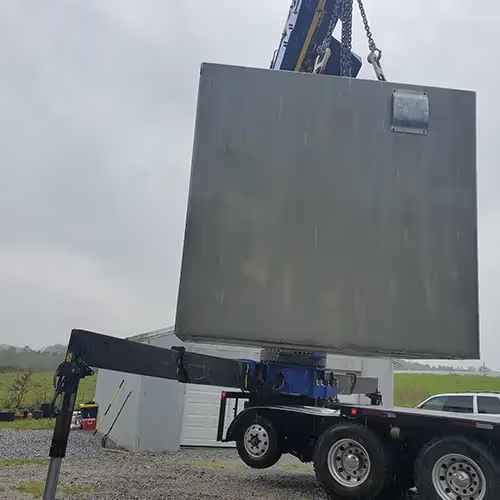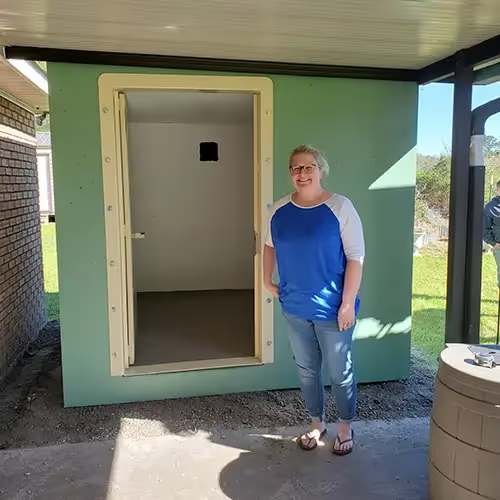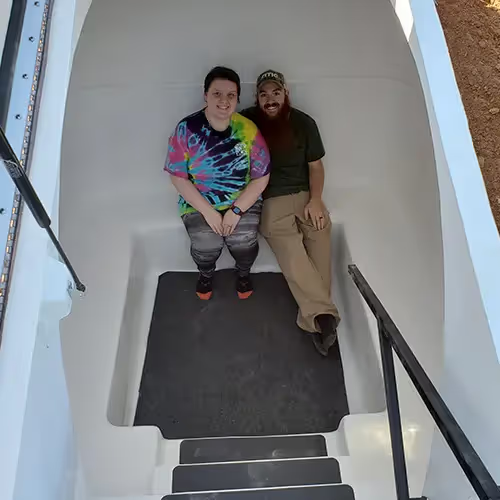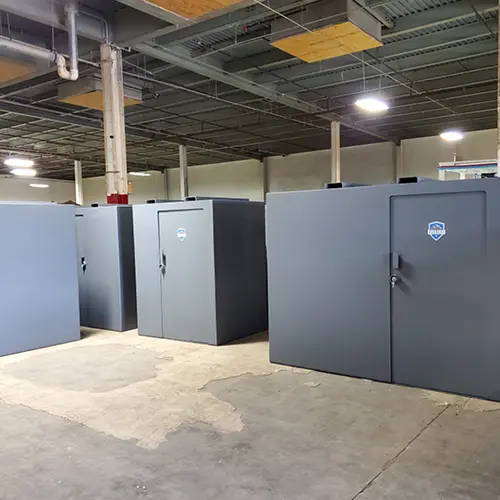Concrete Storm Cellars: Strong, Reliable, and Built to Last

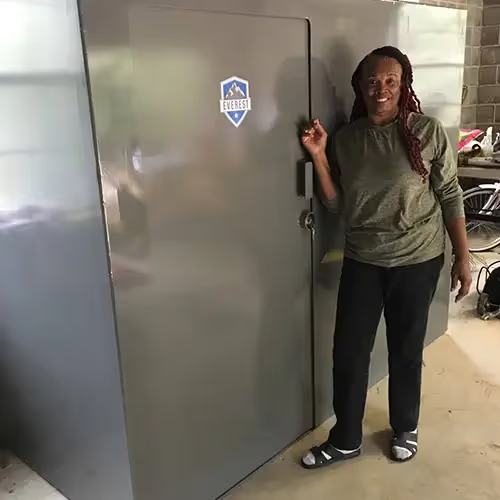
Have you ever considered how quickly a severe storm can disrupt your life? One moment everything seems normal, and the next, high winds, heavy rain, or flying debris can create chaos in seconds. In these situations, having a dedicated safe space is not merely a luxury—it’s essential for your family’s safety. That’s where an underground storm shelter comes into play. Unlike temporary solutions, these shelters are designed to provide long-term protection from tornadoes, hurricanes, and other extreme weather events.
Homeowners are increasingly turning to reinforced concrete bunkers and durable storm cellars because of their unparalleled strength and reliability. A well-designed tornado shelter design ensures that you and your loved ones are shielded from the most violent elements. From storm cellar installation to emergency shelter construction, these solutions are built with resilience in mind. Features such as reinforced walls, secure doors, and ventilation systems make these shelters a true safe haven concrete option.
In addition to protection, these shelters also provide peace of mind. A basement storm protection setup or residential tornado bunker allows families to feel confident even when severe weather warnings are issued. With hurricane storm cellars, family storm shelters, and DIY concrete bunkers becoming more accessible, homeowners have more choices than ever. Precast storm cellars and underground safe spaces offer flexible options, combining safety, durability, and long-term value. Investing in such a shelter is an investment in both family security and future property value.
The Evolution and Importance of Concrete Storm Cellars
Storm shelters have a long history, dating back generations in regions prone to extreme weather. Originally, simple dugouts or wooden structures offered limited protection, but they represented the community’s first line of defense against tornadoes and violent storms. Over time, as building technology advanced and the need for stronger structures grew, reinforced basement safe rooms and blast-resistant bunkers became the gold standard for reliable shelter. Homeowners realized that a temporary or lightweight structure was insufficient for the challenges of modern weather patterns.
A concrete safe room is a purpose-built, fortified structure—either fully underground or partially below ground—that protects families during severe storms. Unlike tents or other temporary solutions, home tornado shelters resist high winds, debris, and even flooding in certain conditions. These structures provide not just a roof over your head, but a secure, long-term solution to weather emergencies. Pre-engineered storm cellars and emergency preparedness shelters incorporate reinforced walls, ventilation, and optimized layouts, ensuring that families remain safe and comfortable during crises.
Contractors specializing in storm cellar installation continue to refine designs with features like better airflow, secure entryways, and more ergonomic interiors. Storm shelter contractors now offer both standard models and custom solutions tailored to homeowners’ needs. With the increasing unpredictability of storms, investing in a durable storm cellar is no longer optional—it’s essential. Understanding the history, evolution, and modern advancements in concrete storm cellars provides context for why these structures remain the most reliable choice for protecting homes and loved ones.
Why Concrete Storm Cellars Stand Out
Concrete storm cellars are designed to provide a dependable underground safety shelter, offering both immediate protection and long-term reliability. Unlike above-ground safe rooms, these shelters are built to withstand extreme forces, making them ideal for tornadoes, hurricanes, and other severe weather events. Their strength lies in the materials and construction techniques used, from reinforced walls to secure entry points, all engineered to provide maximum safety.
Key features include:
- Durability – Concrete withstands high winds, flying debris, and heavy impacts.
- Low Maintenance – Unlike metal or wooden alternatives, these structures require minimal upkeep.
- Longevity – Properly installed storm cellar installations can serve families for decades.
- Customization – Modern designs allow options like ventilation, seating, and lighting systems.
- Cost-Effectiveness – While concrete shelter cost may initially be higher, the long-term value is unmatched.
Imagine a family in tornado-prone areas. A family protection cellar ensures they have instant access to safety without worry. Investing in a concrete bunker kit or outdoor storm bunker means peace of mind, knowing that the structure is secure, tested, and durable. Additionally, basement storm protection or residential storm bunkers provide a dual benefit: safety and increased property value. In short, concrete storm cellars are not just functional—they are smart, strategic investments that offer security and long-term comfort for any household.
The Benefits of Choosing a Concrete Storm Cellar
Choosing a concrete storm cellar provides unmatched protection, comfort, and peace of mind. These structures are engineered to shield families from tornadoes, hurricanes, and severe weather, making them a cornerstone of home safety. Beyond immediate safety, concrete storm cellars offer long-term advantages that can positively impact property value, family preparedness, and overall quality of life.
Key benefits include:
- Unmatched Protection – Reinforced concrete withstands extreme winds, heavy impacts, and debris.
- Long-Term Value – Minimal upkeep ensures decades of safety for your family.
- Peace of Mind – Whether a DIY concrete bunker or residential storm bunker, you’ll feel secure during severe weather.
- Customizable Comfort – Ventilation, lighting, seating, and storage for emergency supplies enhance usability.
- Added Home Value – A tornado-proof cellar increases appeal, especially in tornado- and hurricane-prone areas.
Consider a family in Oklahoma who installed a concrete storm cellar. During a major tornado event, they sheltered safely while unprotected neighbors faced costly damage. The investment paid off not only in safety but in reduced stress and long-term reassurance. Features like precast storm cellars, underground safe spaces, and hurricane storm cellars make it possible to have a modern, comfortable, and highly functional shelter. Concrete storm cellars provide tangible benefits that go beyond survival—they offer confidence, security, and enduring value.
Challenges to Consider
While concrete storm cellars provide significant benefits, there are some practical considerations homeowners should understand before investing. Recognizing potential challenges ensures you are prepared and can maximize your investment in safety and long-term functionality.
Key challenges include:
- Higher Upfront Cost – Concrete shelters can require a larger initial investment.
- Installation Requirements – Safe room installation involves excavation, professional labor, and permits.
- Limited Mobility – Underground shelters cannot be relocated once installed.
- Potential Moisture Issues – Proper waterproofing is necessary to prevent leaks.
- Accessibility Concerns – Stairs or ladders may challenge children, seniors, or people with mobility limitations.
Solutions include careful budgeting, hiring experienced storm shelter contractors, installing accessibility features, and conducting annual storm shelter maintenance. By planning carefully, homeowners can mitigate challenges and enjoy the long-term advantages of emergency basement shelters, heavy-duty storm bunkers, and protective storm cellars. These shelters are designed to last for decades, combining practicality, safety, and resilience for families and communities.
How to Get Started
Taking the first step toward a concrete storm cellar doesn’t require expert construction knowledge. Planning, research, and the right guidance can make the process smooth and successful.
Steps to begin:
- Assess Your Needs – Evaluate location, family size, and storm frequency.
- Set a Budget – Weigh initial costs against long-term value for concrete safe rooms or residential storm bunkers.
- Research Local Regulations – Check for storm cellar permits and zoning requirements.
- Choose the Right Location – Select a safe, accessible area like the backyard.
- Hire a Qualified Contractor – Ensure expertise in emergency basement shelter or storm cellar installation.
- Add Custom Features – Ventilation, lighting, seating, and storage can enhance comfort.
- Schedule Regular Check-Ups – Annual inspections maintain reliability and safety.
Resources such as local emergency management offices, home improvement stores, safe room suppliers, and professional contractors can provide valuable guidance. Tracking progress from planning to stocking supplies ensures families stay prepared. Investing in a pre-engineered storm cellar or concrete survival shelter is a proactive step toward long-term safety and peace of mind.
The Future of Concrete Storm Cellars
Concrete storm cellars are evolving rapidly. Modern designs incorporate technology, sustainability, and multi-functionality, making shelters safer, more comfortable, and versatile. Innovations ensure that homeowners can prepare for increasingly unpredictable weather patterns while adding value to their property.
Trends include:
- Smarter Designs – Ventilation sensors, emergency lighting, and smart locks.
- Eco-Friendly Construction – Sustainable concrete and green building practices.
- Modular and Prefab Options – Precast storm cellar solutions for faster, cost-effective installations.
- Enhanced Accessibility – Wider doors, ramps, and ergonomic layouts for all family members.
- Multi-Use Spaces – Dual-purpose areas for storage, wine cellars, or safe rooms.
These innovations benefit homeowners, storm shelter contractors, communities, and emergency planners, ensuring a higher standard of safety while integrating convenience and value. Early adopters of modern storm shelters, including heavy-duty storm bunkers, outdoor storm bunkers, and protective storm cellars, will enjoy greater peace of mind while contributing to overall neighborhood resilience.
Wrapping Up
Concrete storm cellars are more than protective structures—they’re heavy-duty storm bunkers that combine safety, durability, and comfort. Features such as tornado readiness guides, disaster shelter plans, DIY concrete bunkers, and safe haven concrete designs make them essential investments for families in severe weather regions.
Start by assessing your property, exploring safe room suppliers, or consulting qualified storm shelter contractors. Building safety into your home ensures long-term security, peace of mind, and added value. Concrete storm cellars are a proactive choice, offering protection, resilience, and confidence during life’s most unpredictable moments. Stay prepared, stay safe, and create a home that safeguards what matters most.

